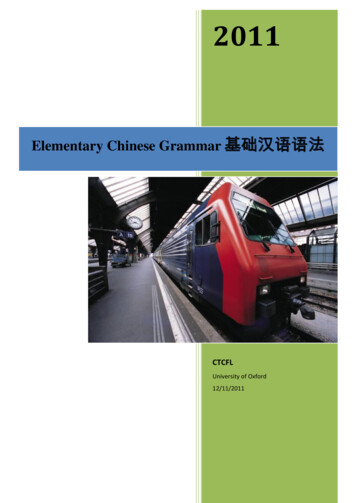
Transcription
2011Elementary Chinese Grammar 基础汉语语法CTCFLUniversity of Oxford12/11/2011
Elementary Chinese Grammar 基础汉语语法2011with exercises and website r%20database/Grammar database content.htm Centre for teaching Chinese as a Foreign LanguageUniversity of Oxford2
Elementary Chinese Grammar 基础汉语语法2011ContentThe graphic parsing method for Chinese languageStative verbsSlight-pause markThe verb 是 shì to beUse of 这 and 那The possessive indicator 的 deThe descriptive indicator 的 deFormation of plural pronounsThe use of 姓 xìng and 叫 jiàoQuestion wordsThe interrogative 呢 ne呢 ne used for emphasis什么, 哪儿 and 谁Question words used for numbersChoice-type questions of verb 不 verbChoice-type question with the negation 没 (有)Choice-type questions with 还是The short answers for "yes" and "no"The position of time words in Chinese sentencesBinominal verbs and verb-object patternsGreeting words3
Elementary Chinese Grammar 基础汉语语法2011Repetition of greeting wordsPrefixes 老 and 小The Subject-Verb-Object (SVO) sentence patternsNumbers in Chinese Counting numbers Reading out aloud a number Written form for numbersVerb 一 下Co-verbs and co-verb phrasesMeasure words太 expresses excessivenessPronoun/noun 这儿 or 那儿Telling the timeModal verbsAsking agesThe use of the particle 着Aspects Use of the 正在 呢 sentence pattern The aspect for the completion of actions 过 expressing experiences of actions in the pastPosition words with 在, 是 and 有The use of 请Verbs that take two objects4
Elementary Chinese Grammar 基础汉语语法2011Serial verbs (after verbs of motion 来 and 去)Use of 有Review of interrogatives following 好吗Modal particle 了Adverbs 就 and 才 with time words and numbersComplement of degree 得The use of the adverbial 地The use of 从 and 离Complements Resultative Verb Complements Directional Verb Complements Potential Verb ComplementsComparatives Comparatives 比 with stative verbs and complements of degree Comparatives with 一样The 把 sentence constructionPassive with 被, 让, 叫 and 给Notional passive (without 被, 让, 叫 and 给)ConjunctionsThe 是 shi . 的 de constructionThe uses of question words with 都 dou and 也 ye5
Elementary Chinese Grammar 基础汉语语法2011The 连 lian 也 ye constructionThe graphic parsing method for Chinese languageAs an analytical approach plays a major role in the learning of Chinese language, you arerequired to have some knowledge of Chinese grammar and grammatical terminology. One ofthe simplest ways of doing this is to use two axes to make a cross, with the two sides dividingthe components of a sentence up for parsing. This will help you to understand the relationshipbetween the components.The following two examples demonstrate how to parse.1. "These old methods are completely absurd."Subjectmethods (noun) these (specifier) old (adjective)Predicate are (verb) absurd (adjective) completely (adverb)2. "We teach our students at Oxford using an old fashioned method."SubjectWe (pronoun)Predicate teach (verb)students (noun) at (prep) Oxford (prop n.) our (adj) using (verb) method (noun) an (article) old-fashioned (adj)It is a good idea to take out a few sentences for analysis from each lesson by using thismethod; it will be of great benefit to your reading skills when you are at a more advancedstage of learning.6
Elementary Chinese Grammar 基础汉语语法2011Stative verbs (1 & 2)A stative verb expresses quality or conditions, as 好 hăo to be good and 忙 máng to be busy.In Chinese a stative verb is used where in English one would use the verb „to be‟ with anadjective. For instance,他很忙 tā hěn mángSubject他 (pronoun)he is very busy.Predicate 忙 (stative verb) 很(adverbial intensifier)The word 忙 máng to be busy is a stative verb in the above sentence. A monosyllabic stativeverb is often preceded by the adverbial intensifier 很 hĕn very. As you may have noticed, theadverbial intensifier 很 hĕn very is placed before the stative verb 好 hăo to be good.As with any Chinese verb, the negation 不 bù not should be placed before the verb, as in 不忙 bù máng not to be busy. 不 bù not is the only negation used for stative verbs. Thenegation 没 méi not for is not used for stative verbs.Slight-pause mark (3)The slight-pause mark "、" is called 顿号 dùnhào in Chinese (lit. mark for a pause). It issimilar to a comma in English. It is used for separating a list of nouns, such as你哥哥、你弟弟好吗?nĭ gēge、nĭ dìdi hăoma?How are (both) your older and younger brothers?The slight-pause mark in this question is used to separate 哥哥 gēge older brother and 弟弟 dìdi younger brother.7
Elementary Chinese Grammar 基础汉语语法2011The verb 是 shì to be (4)The copula 是 shì to be does not have the same usage as the verb to be in English. (See thenotes on stative verbs.) 是 shì to be is used for linking two noun phrases. It indicates that thenouns linked by 是 shì to be are of the same nature or quality. For instance小王是 中国 人Xiăo Wáng shì Zhōngguó rénXiao Wang is Chinese.Subject小王 (p opernoun)Predicate 是 (copula) 中国人 (qualified noun: formed by qualifier中国 and 人 noun)Use of 这 and 那 (5)The specifiers 这 zhè this or 那 nà that can be used as the subject of a sentence, if thesubject is visible to listeners. „This‟ is commonly used when introducing people to eachother. For instance, 这是我爸爸.zhè shi wǒ bàba Subject这 (specifier)This is my father Predicate 是(copula/verb) 爸爸(noun) 我 (short for 我的The possessive indicator 的 de (5)This construction indicates that the noun after the particle 的 de belongs to the noun thatcomes before 的 de, as in 小王的书 Xiǎo Wáng de shū Xiao Wang’s book. As you mayhave noticed, this use of 的 de is similar to the use of the possessive apostrophe in English.8
Elementary Chinese Grammar 基础汉语语法2011However, the possessive 的 de can be omitted in the following situations.1. When a pronoun is followed by a relationship noun such as 爸爸 bàba father, 妈妈māma mother, 哥哥 gēge older brother, 姐姐 jiĕjie older sister, 弟弟 dìdi youngerbrother, 妹妹 mèimei younger sister or 朋友 péngyou friend, 老师 lăoshīteacher., 的 de is not needed. For instance, 他妹妹 tā mèimei his younger sister.2. When a pronoun is followed by a place noun to which the pronoun is closely related,such as 家 jiā home, 国家 guójiā country, 学校 xuéxiào school or 班 bān class.的 de is not needed. For example 我家 wŏ jiā my home, 他学校 tā xuéxiào hisschool.If you use more than one noun to classify the main noun, 的 de is often placed before themain noun (unlike the possessive apostrophe in English) instead of being placed after eachnoun, as in我 姐姐 朋友的 老师 是 我 哥哥 同 学的 爱人Wǒ jiějie péngyou de lăoshī shì wǒ gēge tóngxué de àirenMy sister's friend's teacher is my brother's class-mate's wife.The descriptive indicator 的 de (5,6)The genitive particle 的 de is used to describe nouns. The description of the noun is placedbefore 的 de. In this construction the description can take the following forms.The description can be a disyllabic phrase, formed by an adverb and an adjective, as in很好 的 书hĕn hăo de shūa very good book.9
Elementary Chinese Grammar 基础汉语语法2011However, a monosyllabic adjective such as 好 hăo good or 忙 máng busy is often placedbefore a noun without 的 de to form an adjective-noun phrase, as in 好书 hăoshū (a) goodbook, 好老师 hăo lăoshī (a) good teacher, 忙人 máng rén (a) busy person.The description can also be a phrase or a sentence. It is like an inverted relative clausesentence in English. For instance,小王买的 书 很好Xiăo Wáng măi de shū hěn hăoThe book that Xiao Wang has bought is very good.Subject书 (noun) 买 (verb) 的(genitive particle) Predicate 好 (stative verb) 很 (adverbial intensifier)小王 (proper noun)The main sentence is 书很好 shū hěn hăo, which means the book is very good, and thedescription for the book is: that Xiao Wang bought 小王买 Xiăo Wáng măi, which is placedbefore the particle 的 de.However, 的 de is not used in the following situations.1. When a noun qualifier is used to describe another noun forming a combined noun, 的de is not used. A noun that is described should be placed after its description. Forinstance 中国地图 zhōngguó dìtú (a) map of China. 中国 zhōngguó Chinaqualifies the 地图 dìtú map, so China should be placed before map. In 汉语书hànyǚ shū (a) book in Chinese, 汉语 hànyŭ in Chinese (language) qualifies thebook, so 汉语 hànyŭ in Chinese (language) should be placed before 书 shū the10
Elementary Chinese Grammar 基础汉语语法2011book.2. As mentioned above, 的 de is not used when a monosyllabic adjective is followed bya monosyllabic noun to form another noun such as 忙人 mángrén a busy person and好书 hăoshū a good book.Sometimes the nouns after 的 de are left out to avoid repetition, but the omitted noun(s)should be obvious to the listener. For instance,他的 书 很多,中文的, 英 文的, 都 有tā de shū hěn duō Zhōngwén de, Yīngwén de, dōu yŏuHe has many books; Chinese ones, English ones, he has them all.It is clear to a listener that the omitted noun in the sentence is 书 shū books.Tips:1. When you read a Chinese sentence you should always look for any nouns after 的 departicles before translating into English.2. The particle 的 de is used to describe nouns and 的 de should be followed by a noun.Formation of plural pronouns们 men is a placed after a pronoun to form a plural. For instance, if 他 tā he is followed by们 men, it becomes 他们 tāmen they. If 你 nĭ you is followed by 们 men it becomes 你们nĭmen you (pl) and if 我 wǒ I is followed by 们 men, it becomes 我们 wǒmen we.11
Elementary Chinese Grammar 基础汉语语法2011The use of 姓 xìng and 叫 jiào (9)姓 xìng surname can be used as a noun, but it is most commonly used as a verb in Chinesesentences, as in他姓王tā xìng wángHis surname is Wang (lit. he surname Wang)你姓什么?nĭ xìng shénme?What is your surname? (lit. you surname what)A polite form for the above question is您 贵 姓?nín guì xìng?What is your surname? (lit. your honourable surname is )When asking names, 叫 jiào to be called can refer either to given names or to full names. Forinstance,我 姓王,叫文书wǒ xìng Wáng, jiào WénshūMy surname is Wang and I am called Wenshu我 姓王,叫 王文书wǒ xìng Wáng, jiào Wáng WénshūMy surname is Wang and I am called Wang Wenshu.Question and answers12
Elementary Chinese Grammar 基础汉语语法2011Question words吗 ma (2)It is very easy to form Chinese questions. One of the question formulas is to place theinterrogative (question particle) 吗 ma at the end of a statement. For instance, if 吗 ma isplaced at the end of 你 好 nĭ hăo hello (lit. you are well) it turns the statement into aquestion:你 好 吗?nĭ hăo ma?How are you? (lit. Are you well?).If 吗 ma is placed at end of 你是老师 you are (a) teacher, the statement becomes a questionof你是 老 师 吗?nĭ shì lăoshī ma?Are you (a) teacher?The interrogative 呢 ne (2)The interrogative (question particle) 呢 ne is placed at the end of a sentence or phrase. It isused in the following situations.1. To bounce a question back to the person you are having a conversation with, as in:A: 你 好吗?nĭ hăo ma?how are you?B: 我 很好.你呢?wǒ hěn hăo. nĭ ne13
Elementary Chinese Grammar 基础汉语语法2011I am very well, and you?2. To ask the question where? as in我 的 书 呢?wǒ de shū neWhere is my book?呢 ne used for emphasis (35)呢 ne can also be used to reinforce questions that are formed with question-words such aswho, what, which, when, why and where (See below) and to show that the speaker reallywould like to know the answers. For instance,他在 哪儿呢tā zài năr neWhere IS he?你看的是 什么 书 呢 ?nĭ kàn de shì shénme shū neWhat book ARE you reading?什么, 哪儿 and 谁 (6, 7)The question word 什么 shénme what does not have a fixed position in a question. Itchanges according to the position of the subject or the object of a sentence. In the followingquestion 什么 shénme what refers to an object:你吃 什么?nĭ chī shénme14
Elementary Chinese Grammar 基础汉语语法2011What are you eating? (lit. you eat what).什么 shénme what can also refer to the subject of a question, as in什么人 吃 中国饭?shénme rén chī zhōngguo fànWhat kinds of people eat Chinese food?哪儿 năr where and 谁 shuí who are like 什么 shénme what can refer to the subject or theobject of a question. The following question words are used as the objects of the questions:你去 哪儿?nĭ qù nărWhere are you going? (lit. you are going where?)你找谁?nĭ zhăo shuíWho are you looking for? (lit. you are looking for whom).The question words refer to the subjects of the following questions.哪儿是 图书馆?năr shì túshūguăn?Where is the library?谁吃 中国饭shuí chī zhōngguuó fàn15
Elementary Chinese Grammar 基础汉语语法2011Who eats Chinese food?If you listen to a question very carefully and remember its word order, it is easy to form ananswer in Chinese, because the word order of an answer is the same as that of the question. Ifyou use an appropriate noun or pronoun and replace the question word with an appropriateword, you will be your answer in Chinese. Take a question like你去哪儿?nĭ qù nărWhere are you going? (lit. you go where).If your answer is the library, you just have to replace the pronoun 你 nĭ you with 我 wǒ I andreplace the question word 哪儿 năr where with the word 图书馆 túishūguăn library. Theanswer is then我 去 图书 馆wǒ qù túshūguănI am going to the library.When forming a Chinese question, you should try to form the sentence pattern for the answerand replace the required information with a question word. For instance, 去图书馆 qùtúshūguăn (someone) is going to the library. Replace "someone" with the question word 谁shuí who and the question will be谁去 图书 馆 ?shuí qù túshūguănWho is going to the library?怎么 and 为什么Question words used for numbers (10,15)16
Elementary Chinese Grammar 基础汉语语法2011多少 duōshao how many and 几 jĭ how many are used to ask about quantity. 多少duōshao how many is used to expect a number in the answer which is over ten, while thequestion word 几 jĭ how many is used to expect a number which is under ten.你们系有几个 老师,多 少学生?nĭmen xì yǒu jĭ ge lăoshī duōshao xuésheng?Wow many teachers and students are there in your department?The speaker expects that there are fewer than ten teachers and more than ten students in thedepartment. You might have noticed that in questions 几 jĭ is followed by a measure word,but 多少 duōshao is not. However, measure words are needed for answers with numbers:我 们系有 七个 老师, 八 十 个 学
Elementary Chinese Grammar 基础汉语语法 2011 7 Stative verbs (1 & 2) A stative verb expresses quality or conditions, as 好 hăo to be good and 忙 máng to be busy. In Chinese a stative verb is used where in English one would use the verb „to be‟ with an
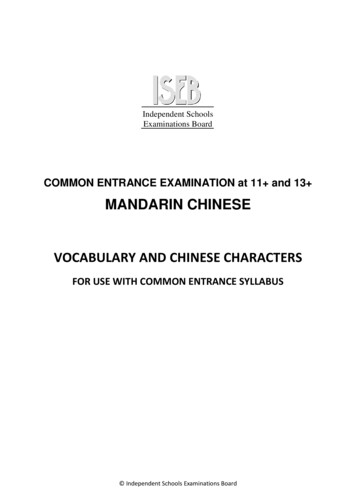
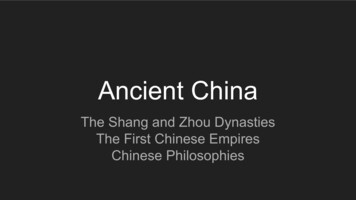
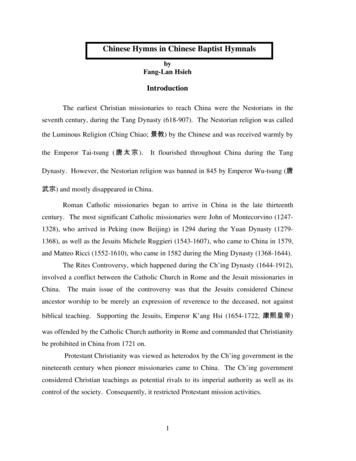
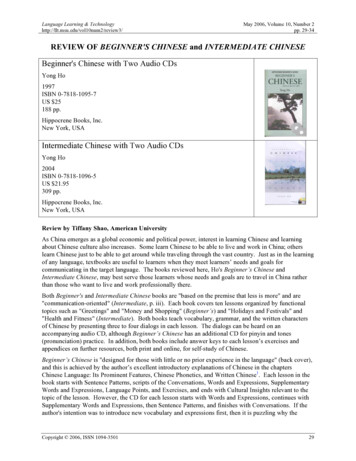
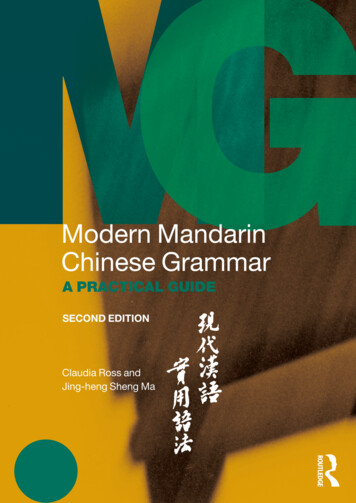

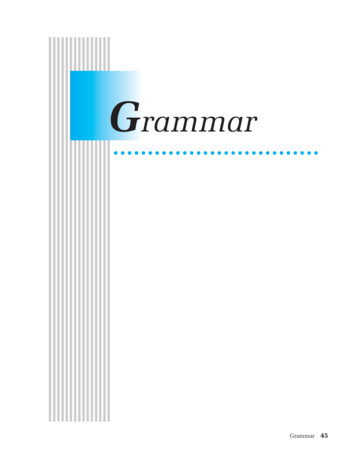
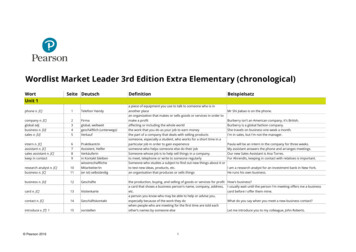
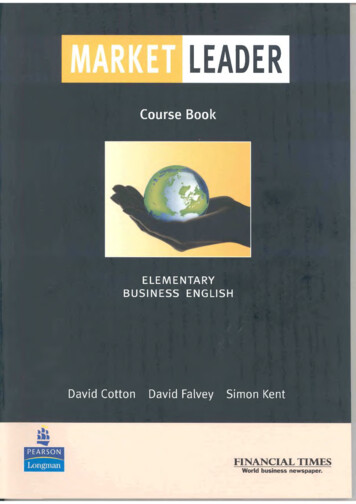
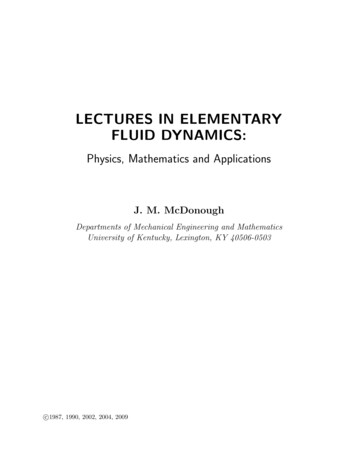
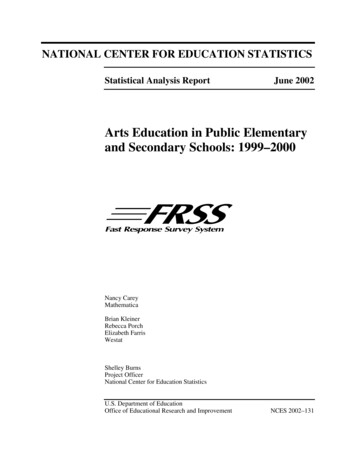
![Rubank elementary method : [for] flute or piccolo](/img/5/rubankelementary-flute.jpg)